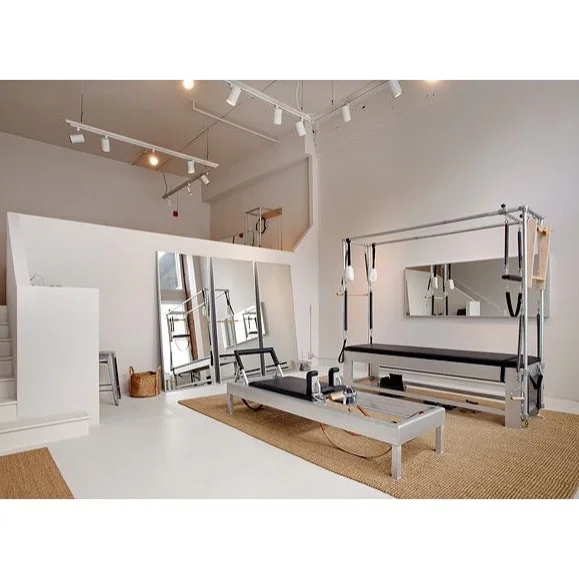Dev Winsor getting run way fit with 1:1 private Pilates sessions.
“In 10 sessions you’ll feel the difference, in 20 you’ll see the difference, and in 30 you’ll have a new body”
Pilates is a method of exercise focused primarily on control & precision. Getting the most from each exercise requires correct alignment & technique. Even being slightly off centre, or working through one side of the body more than the other, makes a massive difference to the feel & benefit of the exercise. Clients might say: Where should I be feeling this? Not knowing where to feel the challenge in Pilates is often the result of not being in the ideal position or alignment, or of not fully understanding the exercise or the basic fundamental principles of Pilates such as properly activating the core/power house. Generally speaking, when the body is functioning optimally in a balanced, aligned way, it becomes much clearer where you should be feeling the exercises & even more so as the body becomes stronger. This is why having regular 1:1 or 2:1 sessions under the watchful eye of certified, experienced instructor can make all the difference. During a private lesson, your instructor should always be completely focused on the alignment of your body, coaching, cuing & adjusting your position, so that you are getting the most benefit out of each movement. I believe even highly experienced students or instructors still benefit from this personal approach. Having someone experienced look at your alignment & technique regularly helps to make sure you don’t pick up undesirable habits, sometimes being crooked starts to feel totally normal!
Now don’t get me wrong, I think group classes are great as they are a fun, cost effective way to get the body moving & often provide a really good workout. However, when an instructor is managing a varied group with lots of different abilities, there is less time available to explain each exercise to everyone, & it can very difficult to give individualised attention. This has the potential to become a problem long term if clients are doing Pilates for years without really improving or are not understanding the detailed techniques specific to their own body. A mixture of private lessons & group classes can be a great combination, allowing you to take the knowledge & information gained in your private sessions, with you into your group classes. I recommend doing at least 5 - 10 private Pilates lessons, either 1:1 or 2:1, before doing any kind of large group class if possible. This ensures you will be building on a solid foundation, & gives you a clearer understanding of the Pilates principles, along with an awareness of what your body needs in order to be aligned & balanced. This is especially important if you have injuries, are pregnant or post natal.
If you have been doing large group Pilates classes for a while, it can also be good to look at supplementing a class with a private Pilates session every 2 - 8 weeks. Often I find clients who do 1 - 3 private sessions a week, over 4+ group classes, can get more effective results due to the personalised attention & precise focus on technique. Sometimes quality over quantity is beneficial, especially if you are new to Pilates. Investing in private sessions is an investment worth making if you want to get more out of your workouts long term. When you really understand the goal of each exercise, & have the ability to work your body optimally, you will have the power to transform those ‘basic’ Pilates exercises into something a lot deeper, more challenging, & ultimately transformational for the mind & body!



